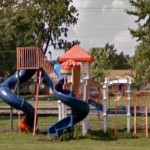
Winter is an important time to check on older adult family members, friends, and neighbors to ensure they stay safe throughout the season. In addition to colder temperatures and snow, winter weather can bring an increased risk of health problems and injuries to older adults.
The Ohio Committee for Severe Weather Awareness offers tips to considerwhen helping older adults this winter:
- Falls are a concern for everyone, especially for older adults. Putting road salt, cat litter, or sand on sidewalks, steps, and driveways will make these areas as slip-free as possible. Non-slip shoes are also a great way to help older adults navigate slippery conditions.
- Cold temperatures make older adults susceptible to hypothermia, a dangerous drop in body temperature. Learn the warning signs of this weather related illness and how to prevent it.
- Shoveling can put too much strain on the heart. Older adults, especially those with heart disease or high blood pressure, should leave snow shoveling to others.
If you do not live near your older adult family members, it may be helpful to create a plan about how you’ll connect with them during an emergency. Download and complete the Family Emergency Communication Plan fromAmerica’s PrepareAthon! and share it with your family today.
Source: U.S. Federal Emergency Management Agency (FEMA)

The Lincoln Park Neighborhood Watch Program (NWP) is proud to support the city of Lincoln Park’s Adopt a Park Program.
We have chosen to adopt Jaycee Park, located at the corner of Harrison and Ferris. This is a small park, but has a playscape for younger children, a shelter, and a barbecue grill, as well as a basketball court.
As a part of the program, we will be responsible for visiting the park regularly to do minor clean up, such as picking up trash, pulling large weeds. Any major issues noted, such as graffiti, damaged equipment, should be reported to the program supervisor. In addition, we are required to hold at least one large public event at the park during the summer season.
We are reaching out to our members and asking you to help us support this effort to make our city a cleaner, safer place to live, work, and play.
Our first cleanup effort will be held on Saturday May 16th from 10:00 am until about 12:00 noon. We expect to be picking up trash, pulling weeds, and possibly painting the playscape, so wear work clothes, and bring your own gloves. Other supplies will be provided. Specific dates and times for subsequent organized group cleanups are undetermined at this time; we will notify you as soon as we have that information. In the meantime, please feel free to stop by Jaycee Park, or any of the parks in our city, whenever you have a chance.
For more information or to assist, please contact Mary Ellen Mitchell (Volunteer Coordinator) mare48146@yahoo.com or Michael Parr (Program Coordinator) gmparr714@gmail.com or by calling 313-381-3217.

This article was originally posted on http://apartmentprepper.com, and used with permission.
There are a lot of things that a person can do in 8 minutes. For example, wash the dishes, make a sandwich, check email, or make a cup of coffee. Eight minutes is all a burglar needs to rob your home. That’s pretty fast considering this is a new environment for him, because all homes are different. Burglars don’t like to hang around inside your house for long. The longer they are inside, the higher the chances they’ll end up on the inside of a jail cell. These tips will slow them down and hopefully get them out of your home with less of your valuables.
Synchronize your watch to “the break-in clock.” By the time you finish reading this article, the burglar has already moved onto the next target.
The Break-in Clock: 1-2 Minutes: Once a burglar has gained access into your home he or she will primarily use the same search pattern, this is if the burglar alarm hasn’t gone off yet. The first stop is directly to the master bedroom. They will look for cash, jewelry, or anything that might be valuable. People often make the mistake of leaving money or jewelry in the most common areas such as a dresser, under the bed, the closets, or bedside table.
Keeping a safe in your home is probably your best bet to keep all of your cash and jewelry secure. Burglars won’t have enough time to break into the safe, but if it’s not bolted down, chances are the burglar will be taking it with him.
3-4 Minutes: The next room of your home is the bathroom. Burglars will always check your medicine cabinets to see if there is any narcotic prescriptions. Try putting these in a first aid kit tucked under the sink or behind the toilet.
5-6 Minutes: The next stop may be the living room, kitchen or family room, so don’t leave easy-to-sell, high-value, compact items such as laptop computers, iPods or cameras lying around or you can be sure to lose them as well. Interior locks on the doors leading to your study or gaming rooms would frustrate a rushing burglar’s ability to cash in on your electronics.
Valuable personal information is often stored in your personal computers. It’s always safer to have your computer password protected, and ideally only store important files offsite in an online data cloud storage website such as Dropbox. To protect your online passwords, credit card information and more, try 1Password, a password generation and encryption software.
7-8 Minutes: After the burglar has gathered everything he may need, he will usually call a partner to meet him and load up all of your goods into the car or van. Once all of the goods have been loaded, the burglars drive away to their next target. It’s a never ending cycle.
“It usually takes me about 8-12 minutes to get in and out of your home. It’s as easy as that!” boasts burglary professional Pat O.
In closing, there are a lot of things that you can do to avoid a home burglary. A security system is a no- brainer. If that’s not an option, leaving a TV or stereo on during the day usually helps burglars avoid your home. This usually indicates someone is home. Also, most burglars won’t even attempt entry if they know there’s a large dog in the home.
Burglaries can result in loss of both valuables and peace of mind. Therefore, it is important to take adequate steps to protect one’s home and increase its security. Begin by accepting that all homes are vulnerable to theft and burglary and then, act to step up security and keep one’s home, family and belongings safe and secure.
This post was written by Kevin Raposo. He writes for SimpliSafe, the wireless security system that helps you take control of your safety.
Source: http://apartmentprepper.com/burglars-universal-search-pattern/

Did you know there is one new victim of identity theft every three seconds in the United States? Identity theft is when someone uses your identifying information such as name, date of birth, social security number, credit card number, etc. to obtain goods, services, credit or open fraudulent bank accounts.
Awareness and education are the first steps in preventing identity theft. By safeguarding your personal information, you can reduce the likelihood of becoming a victim.
Here are some ways you can protect your identity:
- Never give out identifying information in response to unsolicited offers by phone, mail, Internet or in-person.
- Order and review your credit report yearly to check for unauthorized activity. You are entitled to one free credit disclosure in a 12-month period. To request a free credit report, visit Central Source at www.annualcreditreport.com or call toll-free (877) 322-8228.
- Review financial and credit card statements monthly for unauthorized charges.
- Cross shred documents (i.e. receipts, insurance forms, bank and credit card statements, cash advance checks, etc.) containing personal identifiers before discarding.
- Remove mail from the mailbox as soon as possible. Place your mail delivery on hold at the post office while out of town.
- Be aware of where your personal identification is kept at work and at home, and know who has access to it.
- Protect your wallet and/or purse – never leave them unattended. Limit the number of credit cards you carry and don’t carry your PIN or social security card in your wallet and/or purse.
- Treat checkbooks, ATM cards, credit cards and credit card offers as cash. Cancel unneeded credit cards.
- Don’t put your social security number, phone number or date of birth on your checks.
- When using the Internet to make purchases, look for the “s” in the address (https) to ensure it is a secure site.
For more information about how to prevent identity theft and what steps to take if you are a victim, visit www.michigan.gov/identity-

Did you know that Michigan law requires you to move your vehicle from the main traveled portion of the roadway if you have been in a crash where your vehicle can be moved and there are no apparent injuries?
If you are involved in a vehicle accident and there are no apparent injuries, look for a safe location to park your vehicle such as the shoulder, emergency lane, or median. Once parked in a safe area, call police to report the accident.
Moving your vehicle from the traveled portion of the roadway protects your safety because there is an increased likelihood you could be involved in a subsequent collision if you remain in the roadway.
You need not worry about impacting the investigation of the crash by moving your vehicle, as police and insurance companies are trained to analyze crashes to determine the cause.
Source: Michigan State Police (MSP)